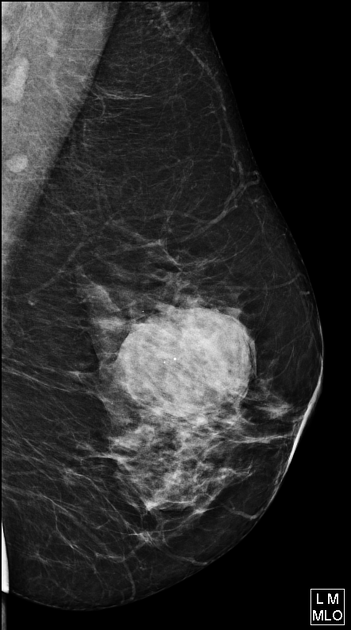BI-RADS 3 is an intermediate category in the breast imaging reporting and data system. A finding placed in this category is considered probably benign, with a risk of malignancy of > 0% and ≤ 2%4.
On this page:
Terminology
BI-RADS 3 should not be utilized in the screening setting. It should be reserved for the diagnostic setting, such as when patients are recalled from screening for additional views (ie, following BI-RADS 0) or when patients present with a palpable lump.
Radiographic features
Mammography
The BI-RADS Atlas, fifth edition, contains three mammographic findings that should be categorized as BI-RADS 3 4,6:
circumscribed, round or oval mass without calcification
focal asymmetry without calcification or architectural distortion
Ultrasound
The following sonographic findings may be categorized as BI-RADS 3 6:
complicated cyst with uniform low-level echoes (not to be confused with a complex cyst)
microlobulated or oval mass composed of clustered microcysts (although BI-RADS 2 may be appropriate if the appearance is classic 7)
hypoechoic mass, circumscribed, oval, parallel, without posterior features or with minimal posterior enhancement
hyperechoic mass with central hypoechoic to anechoic components and surrounding edema consistent with, but not diagnostic of, fat necrosis
refraction shadowing without an associated mass
architectural distortion thought to be due to postsurgical scar
Radiology report
BI-RADS 3 carries a management recommendation of short-term follow-up. The recommendation should be for the modality or modalities that best demonstrated the initial finding. While follow-up protocols differ across practices, a common schedule is at 6, 12, and 24 months. Once stability is documented for at least two, and at most three years, the finding can be downgraded to BI-RADS 2 (benign). If the finding develops suspicious features such as growth, non-circumscribed margins, or suspicious calcification morphology, then a BI-RADS 4 or BI-RADS 5 classification should be considered.







 Unable to process the form. Check for errors and try again.
Unable to process the form. Check for errors and try again.